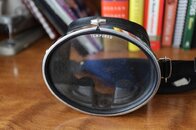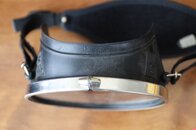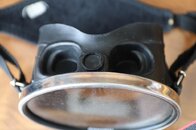David Wilson
Contributor


BAFICO-AQUAGOM is a rubber goods manufacturer trading in Montevideo, the capital city of the Republic of Uruguay in South America. The company now specialises in household appliance production. True to the name AQUAGOM (“aqua” is Spanish for “water” and “goma” Spanish for “rubber”), the firm’s product range once included a diving mask, a breathing tube and a pair of swim fins.
Carlos Rehermann, a prizewinning Uruguayan novelist and playwright, mentions the Aquagom underwater swimming equipment set in his 2016 coming-of-age novel Tesoro:
Spanish: En ese momento yo tenía una máscara modelo Pinocchio de la marca Cressi, un poco más dura que la Aquagom pero mucho más chica, de manera que hacía menos resistencia en el agua. Era de goma negra (todavía no habían llegado las de silicona) con la abrazadera de plástico rojo, sostenida por el alambre de acero que atraviesa el cristal. El modelo Pinocchio fue el primero con nariz externa, aunque aún tenía un solo cristal. Las aletas eran mis viejas Aquagom, bastante duras, es decir muy rendidoras para quien tuviera buenas piernas, que era mi caso. El esnórquel era un Aquagom recto de veinte milímetros, clásico, eficaz y cómodo.
English: At that time I had a Cressi Pinocchio mask, which was a little harder but much smaller than the Aquagom model, so it had less water resistance. It was made of black rubber (the silicone ones had not yet arrived) with a red plastic clamp, held by the steel wire running across the glass. The Pinocchio model was the first with an external nosepiece, although it still had just one lens. The fins were my old Aquagoms, quite hard, i.e., very efficient for those who had good legs, this being the case with me. The snorkel was a twenty-millimetre straight Aquagom, classic, efficient and comfortable.
The diving mask, the breathing tube and the pair of swim fins will be reviewed in this thread. The oval diving mask comes with a stainless-steel rim on the outside and with nose-pinching bosses for ear-clearing on the inside. The open-topped breathing tube is L-shaped and fitted with an offset mouthpiece, which minimises drag and water residue by reducing tubing below head level. Unusually for South American fin designs, the full-foot swim fins have closed toes, which may contribute to their streamlining.






